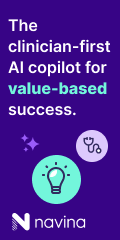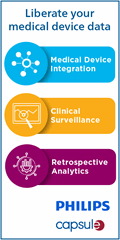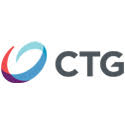From The PACS Designer: “Re: Oracle RAT. A new feature of Oracle 11g is Oracle Real Application Testing, or O-RAT. If you need to make frequent changes to your database applications, O-RAT makes it easier to identify and quickly fix any problems that may be occurring in the production system. One nice feature allows you to capture the production section that needs repair and bring back to the testing platform for analysis and testing of the changes you made to fix any problems. Also new in O-RAT is an SQL Analyzer to do more with fixing and improving performance of any SQL executions.”
From Jake Ryan: “Re: HealthVault. Why anyone thinks our industry should connect patients to doctors before we connect doctors to their own data via other doctors and hospitals constantly blows my mind.” That’s where everyone thinks the money is – consumer advertising. Nobody pays doctors extra for demanding the full set of data that they know is available. Nobody pays insurance companies less if they don’t insist on it. Ads have a simpler revenue model – you make money for showing them or getting people to click on them. Whether that turns out to be beneficial to the clicker or clickee doesn’t matter. Until they stop clicking.
From Samantha Baker: “Re: HealthVault. I couldn’t agree more with your Healthvault comments. What strikes me is that technology companies often don’t understand that people have relationships with physicians, not Web sites.” PHRs are a pipe dream until (a) doctors can get paid for delivering care electronically; (b) access to patient-maintained information from the practice’s EMR is seamless; (c) information can be imported into the EMR to become part of the legal medical record; (d) patients and application vendors get serious about making data collection easy and error-proof; and (e) a firewall is created that keeps insurance companies and employers from digging around patient information to use it against them. I’m not even mentioning privacy concerns since those are obvious. The healthcare model is built around your driving to the doctor’s office, even when your needs could be addressed via electronic means. Parallel: there may be a few people who use TurboTax religously and constantly throughout the year and then make a CPA appointment to review their records at tax time, but not many. Plus, CPAs accept what you give them at face value, while doctors insist on observing it for themselves. Like much of the practice of medicine, you won’t change that unless you change medical education.
PHR counterpoint: the worst that can happen is that no one will use them. Surely they don’t cost much to build for a big company like Google or Microsoft. The search engine alone will more than pay the bills, most likely. These companies aren’t tied to healthcare anyway, so why not take a shot and walk away if it flops? Once the site is built, keeping it running even with few users is easy. Maybe enough of those little old ladies who love going to the doctor will keep PHRs with the same fanaticism as scrapbooking, clicking on enough ads to keep advertisers paying. That’s hardly a healthcare revolution, but then again, that’s not what motivates advertisers or Microsoft. And, the spur in medical device connectivity is a good thing.
From Farmer Ted: “Re: ‘I’ll Have What He’s Having’. With such a major investment and one that has the potential to be significantly disruptive and impact patient safety, can you blame people for the approaches that have been taken in purchasing systems?” Not really, especially since the minefields are many. However, hospitals like to think that continually seeking more information will lead to a better decision. There’s only a dozen or fewer clinical systems vendors out there, so it’s not an infinite universe of possibilities (although the one option they often should choose, i.e. not buying anything, is often given the shortest shrift). If a vendor can produce even one hospital that is achieving great clinical or financial results while using its software, then (a) it’s good enough; or (b) software isn’t a critical factor in that outcome anyway. In fact, I’ll postulate that the search process is of far more value in giving a hospital information about itself than about potential vendors. However, that discovery may lead hospitals to believe that identifying the problem, plus simultaneously looking at systems that claim to solve it, means that the problem is nearly solved. Unfortunately, ain’t so, usually for organizational reasons, not technical ones.
Speaking of HealthVault, Bill Gates has an editorial in the Wall Street Journal. It’s grand and eloquent in scope in its observation of human endeavor and frailty, skillfully masking the message that Microsoft is getting sand kicked in its face by Google and everybody else and needs a new advertising platform. It has the obligatory IOM quotes, healthcare crisis boilerplate, fragmented information examples, etc. Bill claims that HealthVault “will undoubtedly improve the quality of medical care and lower cost.” I’m doubting, so prove me wrong in a research study. Or, why not go at risk for a percentage of the savings instead of charging for ad space?
Last on HealthVault: lots of people hate Microsoft. Blue screen of death. Microsoft Bob. Forced upgrades. Browser security holes. Antitrust issues. Internet tollgate. Assume people buy into PHRs on a big scale. Of all the companies offering PHRs, which one would they trust least with their most personal information? Some Ukrainain hater will have it hacked by this time next week, I suspect.
A couple of readers e-mailed me with the names of a few customers of Unibased Systems Architecture. To clarify: I wasn’t doubting that they have customers, but I am saying that I don’t know who those customers are, have never heard USA mentioned in a CIO’s presentation, and haven’t gotten any e-mails requesting or offering information about them. Their site lists three new customers the past year. I talked to them once years again, but we bought from a competitor.
Speaking of USA, they get a mention in the St. Louis newspaper, which unfortunately managed to misspell the company’s name in its headline. It is a weird and unwieldy name, I’ll admit.
Some NHS trusts want to break ranks from Cerner Millennium for mental health applications.
McKesson announces Horizon Homecare Wound Advisor. Says its integrated. Could be since it’s home care, but when you see Horizon, always ask: Were all modules developed internally by the same company? Are the development offices in different cities? Is more than one database required? Can the integrated suite run without an interface engine or HL7 processor? Can the entire app be upgraded in one step and by one team? How many ADT feeds are required? Does every client run all the pieces, and if not, how are they disconnected from the mix? Are multiple copies of any table stored? Does any system in the package have different data rules, i.e. dumbing down configuration data so the most backward system in the chain can understand it? Are user tables maintained in just place? Well, I could go on, but you get the picture.
Eclipsys is having its user group meeting starting Sunday (October 7) in Orlando.
Listening: The Clash, London Calling.
Interesting comment from J.D. Kleinke of Omnimedix, the company that was originally developing the Dossia PHR application for big employers, among them Wal-Mart and Intel. “We don’t believe a system that is developed and operated by employers will be trusted by employees.” Based on that, I’d bet that privacy issues were somehow involved in the parting of ways and eventual lawsuits between Dossia and Omnimedix. Maybe the employer-led Dossia wanted keys to the PHR’s back door?
Tennessee vendor Aionex gets some angel investor money. The company is 12 years old, the product seven, and it’s still trying to get going. Advice: lay off the techie buzzwords unless you think programmers are making purchasing decisions. Example from the first paragraph of the home page: “The APRP core is a relational database and data repository for monitoring and modeling process results.” OK, I give up: what are you selling and why should I care?
You know who Philips should buy? Varian Medical Systems. Just a thought.
I forgot to gloat about the Healthvision acquisition scoop: a reader tipped me off long before the official announcement, meaning you read it here on September 14 instead of October 3.
VA had some VistA disruptions in August, ranging from 15 minutes to nine hours. Interesting, but hardly headline-worthy. I’ve never worked in a hospital that didn’t occasionally have outages like that. There are so many points of failure, especially in a regional deployment, and so little money for redundancy that I’d be surprised at five-nines application availability anywhere other than in the data center. Notice I didn’t pile on Kaiser during their HealthConnect downtime problems last year, which I found unremarkable for an IT environment of their size and scope.
Perot Systems loses its Triad Hospitals IT contracts following that hospital group’s acquisition by Community Health Systems.
Shares in athenahealth keep going up: $39.39 at Friday’s close, up $3.09. Tim Draper, inventor of viral marketing by e-mail, has $156 million worth. That’s not how he made his bundle, though: he was an investor in Hotmail and a bunch of other tech companies, also including Skype, for which eBay paid way too much.
E-mail me.
Inga’s Update
Thank you, XLT is Groovy, for enlightening me on Epic’s document manager status. “Epic doesn’t have a DM solution that works at large customer sites. Almost all of their customers go with one of the big DM vendors & interface the pointers to the documents into the system. It works well. Epic does have “EpicScan,” which can be used for low-volume scanning needs. But most customers don’t use it – it moves too slowly to meet their needs.” So it does bring up more questions in my mind (would customers prefer a fully integrated offering?) but I won’t go there.
The endless iSOFT saga appears to be ending. Shareholders approve the $411 million takeover bid from IBA Health. The final merger is scheduled for completion October 30th.
I have enjoyed reading all the news and commentary about HealthVault. Obviously quite a few people are like Mr. H and see it as just a bunch of hoopla. But I am a bit of a Pollyanna and I like a few aspects. For example:
- Until Thursday of this week, I bet millions of folks never gave any thought to maintaining their own personal health record electronically. If nothing else, Microsoft was stirred the PHR pot a bit and raised awareness – for good or bad. (That being said, my 70’s+ parents have not called to tell me they are ready to use a PHR, though a friend with a special needs child was pretty excited about the concept.)
- I love the device integration aspect. Makes me want to go out and buy a heart monitor just to see how it all works. (And I am sure Bill Gates and friends were betting there were a lot of folks like me.) I could see using HealthVault for this feature alone.
- It’s free. Well, at least to consumers. And likely to healthcare providers. I think EMR companies would have a hard time charging for a HealthVault “interface.” Instead they may be driven to make products “HealthVault-ready.” Personally I like that aspect, too.
Ok, so I see it may all be a pipe dream and never catch on and there are still a lot of missing links. And I have no idea if HealthVault is the best product (will Google’s be better?) or if one day all consumers will want to want to keep their own PHR (perhaps in the next generation). But, I must thank Microsoft for the announcement because now I have a HIT topic I can discuss with strange men in bars over cocktails.
HHS awards $22.5 million in contracts to nine HIEs participating in trial implementations of the Nationwide Health Information Network. I look forward to reading more about how my tax dollars are being allocated when Mike Leavitt posts commentary on his blog.
Inga Chats with Ed Marx About Soarian
Over the past few months, some less than favorable commentary has been posted about the Siemens Soarian application. A couple of “in the know” Soarian users suggested we talk with CIO Edward Marx of the University Hospital Systems in Cleveland, since UH system runs the Soarian revenue cycle products. Ed was happy to share his thoughts with HIStalk, in part because he “wanted to set the record straight” about what was going on at his facility. Ed has headed off to Texas Health Resources in the DFW area to take over as CIO. We thank Ed for making time between packing to discuss the Soarian project at his outgoing 2,000 bed, seven hospital system (and wish him luck!)
Inga: Can you provide with some background on your relationship with Siemens?
Ed: We have been a partner of Siemens for 20+ years and running classic applications like Invision. We decided that we were ready to install a new revenue cycle application for everyone, hospitals and physicians. We selected Soarian after our selection process in 2002 and we have been in the process of implementing over the last two years. We have two out of seven sites up, and will add five more over the next year and a half. We had purchased hospitals with legacy systems, so we ended up replacing QuadraMed, Invision, and a homegrown system, all for Soarian.
During the selection process, who else did you look at?
We were using IDX on the physicians’ side, so we looked at IDX at the time. I wasn’t actually involved at the time, but Soarian and IDX were the finalists.
Why was Soarian selected?
The fact that it offered a single database, a single application could handle both the physician and acute components, rather than require a lot of interfaces. We wanted a single MPI and single database. No one else could, and maybe still cannot today, make the same claim. One of the key drivers was the architecture. At the time they were the only vendor building a system from the ground up rather than re-packaging older systems.
Has it lived up to expectations?
We have had a long-term relationship with Siemens. We knew that going into a new product wouldn’t be smooth and we went with eyes wide open, and we knew that going in that it would take more time. We knew if we had purchased a more mature product it might take less time. There is no doubt about it has taken longer, but we are getting the product we wanted. Being able to work directly with the vendor in a partnership in the design is worth some of the pain.
Overall, what is the satisfaction level of the users in your organization?
Overall we haven’t done a survey of them, but they are pleased. In some cases, it is replacing paper records – hand-written appointments – and in some replacing mainframes. As with any radical change in applications, there are change management issues. People are use to doing things a certain way and change causes anxiety. They are a couple of people in the organization that are adamantly against changes and they are the ones that are probably posting to HIStalk. What happened when we implemented Oracle eBusiness Suite was similar – we also had big change management issues. It took six months to a year – maybe two years – to understand the value of it. Now people don’t know how they ever did what they did before Oracle. I think it will be the same thing with Soarian and with EHR, when we get there.
Which modules would you say are fully developed versus those that still need work?
You probably need to talk with Liz Novak, the VP directly leading this and has more direct knowledge. But, the scheduling module had some logic issues that have since been corrected. Issues that were causing slow-downs. As we find them through testing or during go-live, they are very responsive to make the corrections.
I assume you communicate with other Soarian users. Are there other happy users?
We have extensive communication with other sites. Most of them wish that implementation went faster. The pipeline that is coming down with Siemens is huge. And that is not just marketing rhetoric – I’ve seen plenty of things to suggest it is accurate. There are other users similar to us that are working through implementations and going live. Everyone wishes it could be three years faster, but that is the nature of products of new products.
What are some of the most exciting recent product announcements?
The thing that brings us the most comfort is that there are more institutions going live and their pipeline is quite large. The more customers using the product, the better the product becomes. It seems the product is finally rolling. There is a certain build up before you get the inertia of an initiative. They have now hit the tipping point, so the future looks very bright. We have been live on two sites for a year and are very pleased with the progress.
What have you heard is on the development agenda?
I struggle to give you specifics, but they do have regular releases that we have helped develop and test. New releases are coming every six months, but I can’t articulate well what they are. They have a published schedule and they are starting to hit their dates. With each release, there are that much more feature/functions.
Everyone agrees that the workflow engine is unsurpassed in healthcare, but that doesn’t seem to result in sales. Do you think users undervalue that aspect of the software or are users not really committed to redesigning processes to be workflow-driven?
I think they have made more sales than people think. I have been privy to this list. My concern was that have they tested enough in terms of volume. We are fairly large, so we pressed them pretty hard to be sure they could handle our volume. I have seen up close and personal their testing processes and was privy to a lot of detail in terms of volume and it is impressive. I think they have hit their tipping point and you will see them more and more of them as they hit the implementations.
What Soarian direction is provided from the Malvern office vs. the Siemens AG executives in Germany? How strategic is Soarian in a big company like Siemens?
Good question. I may not be the best one to answer the question, but from what I can tell, there were a lot of best practices and processes brought over from Europe in terms of design and development and discipline. I think it has now kind of shifted back to Malvern in terms of specific directions.
You said you are implementing Eclipsys for clinical. Why not Soarian?
We looked at Siemens. We looked through a robust process at a number of vendors. We tried to determine, “Is there an integrated solution out there today that is rich enough to displace our Soarian as revenue cycle and rich enough to replace Eclipsys?” I am really into integrated solutions as are some other executives. We looked at Epic and IDX, and after a thorough analysis with heavy reliance on our customer base, we didn’t think Siemens was strong enough on clinicals to replace Eclipsys and Eclipsys wasn’t strong enough on the revenue cycle, so we went with the best-of-breed approach. Vendors are getting closer to it, but a year and half ago, we didn’t think anyone could do it real well.
With Eclipsys, our first live will be on the ED Tracking module in December. Our hospitals go up with orders in late 2008. It is going very well, but the project is young. It is a four-year process and we are still in year one.
Anything additional you want to add?
Well, you are getting this from me. A lot of people have written in that Soarian is not ready, there is no one live. That is myth that needed to be dispelled. The other thing is, they do have a very active pipeline and we share development notes. The volume is pretty impressive from new customers. It is true that not everyone is satisfied, but no one ever is carte blanche. There are always change management issues, but at the end of the day, you have to work with your customers and ensure you are doing the right thing and the majority will come to find the benefits of the new applications. But, you won’t ever satisfy everyone.
E-mail Inga.



















































































The primary point of using the Cloud is using operating expenses vs limited capital ones and avoiding having to update…